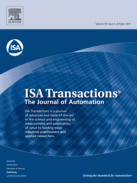Kicking off the New Year with the January issue of ISA Transactions: The Journal of Automation, Editor-in-Chief Dr. Ahmad Rad writes in his 50th Celebration ISA Transactionsmessage from the editor: “ISA Transactions turned 51. The fine tradition starting in 1962 continues and the hard work of many individuals in the last fifty years has facilitated establishing a solid foundation for even further growth.”
In this issue is an article titled, ISA Transactions 50th Year Recognition – And Some Perspectives, written by Dr. Rad’s predecessor, Prof. Russell Rhinehart, which Dr. Rad encourages people to read. “The article is a fast journey to evolution of the journal and implicitly the history of control and instrumentation.”
In his introduction, Rhinehart covers the history of the journal itself:
“… ISA Transactions started in 1962 as a quarterly repository of the best papers selected by the editors from ISA conferences within the U.S. Then, most articles were from industrial authors, revealing the applicability of new products. Now, ISA Transactions has grown to offer six isISA Transactionssues per year. It also has a world-wide reputation, with most authors presenting methodology innovations from the research and development community, and each manuscript vetted with a critical review by several subject matter experts. Although the focus has shifted from devices to methodology, and although manuscripts reveal more equations; articles retain the practical and applications aspect that characterized our beginning.”
To read Russ Rhinehart's full article on 50 years of ISA Transactions, click this link.
He then takes us down memory lane with a historical view of technology:
 “From a historical perspective, ISA Transactions is an interesting story where its articles trace the early days of automation technology. One article from 1962 described the use of key-punch tape, a paper tape, about 1-inch wide, with holes punched into patterns that represented data or simple computer programs. Fed to a teletype machine, the data could be transmitted over telephone wires to a remote time-shared mainframe computer for processing. Results were eventually transmitted back to be noisily typed on paper, or more tape. It could take several minutes to transmit each message, and several hours for a response. But, this was a huge advance over the time to key-punch a deck of cards, to have them courier-delivered to the mainframe operators, and a paper printout delivered back. In 1963, an article discussed the remarkable advances (speed, capacity, and noise) of magnetic tapes. Today, some ISA Transactions articles describe autonomous wireless sensor and transmission systems, representing another stage in the remarkable improvement in data fidelity, speed, capacity, power, and reliability.”
“From a historical perspective, ISA Transactions is an interesting story where its articles trace the early days of automation technology. One article from 1962 described the use of key-punch tape, a paper tape, about 1-inch wide, with holes punched into patterns that represented data or simple computer programs. Fed to a teletype machine, the data could be transmitted over telephone wires to a remote time-shared mainframe computer for processing. Results were eventually transmitted back to be noisily typed on paper, or more tape. It could take several minutes to transmit each message, and several hours for a response. But, this was a huge advance over the time to key-punch a deck of cards, to have them courier-delivered to the mainframe operators, and a paper printout delivered back. In 1963, an article discussed the remarkable advances (speed, capacity, and noise) of magnetic tapes. Today, some ISA Transactions articles describe autonomous wireless sensor and transmission systems, representing another stage in the remarkable improvement in data fidelity, speed, capacity, power, and reliability.”
Enjoy this article? Join ISA and get free access to a wealth of other technical content, plus professional networking and discounts on technical training, books, conferences, and professional certification.
Click here to join ISA ... learn, advance, succeed!
Enjoy this technical resource article? Join ISA and get free access to all ISA Transactions articles as well as a wealth of other technical content, plus professional networking and discounts on technical training, books, conferences, and professional certification.
Click here to join ISA ... learn, advance, succeed!
Copyright © 2006-2019 Elsevier Science Ltd. All rights reserved.




